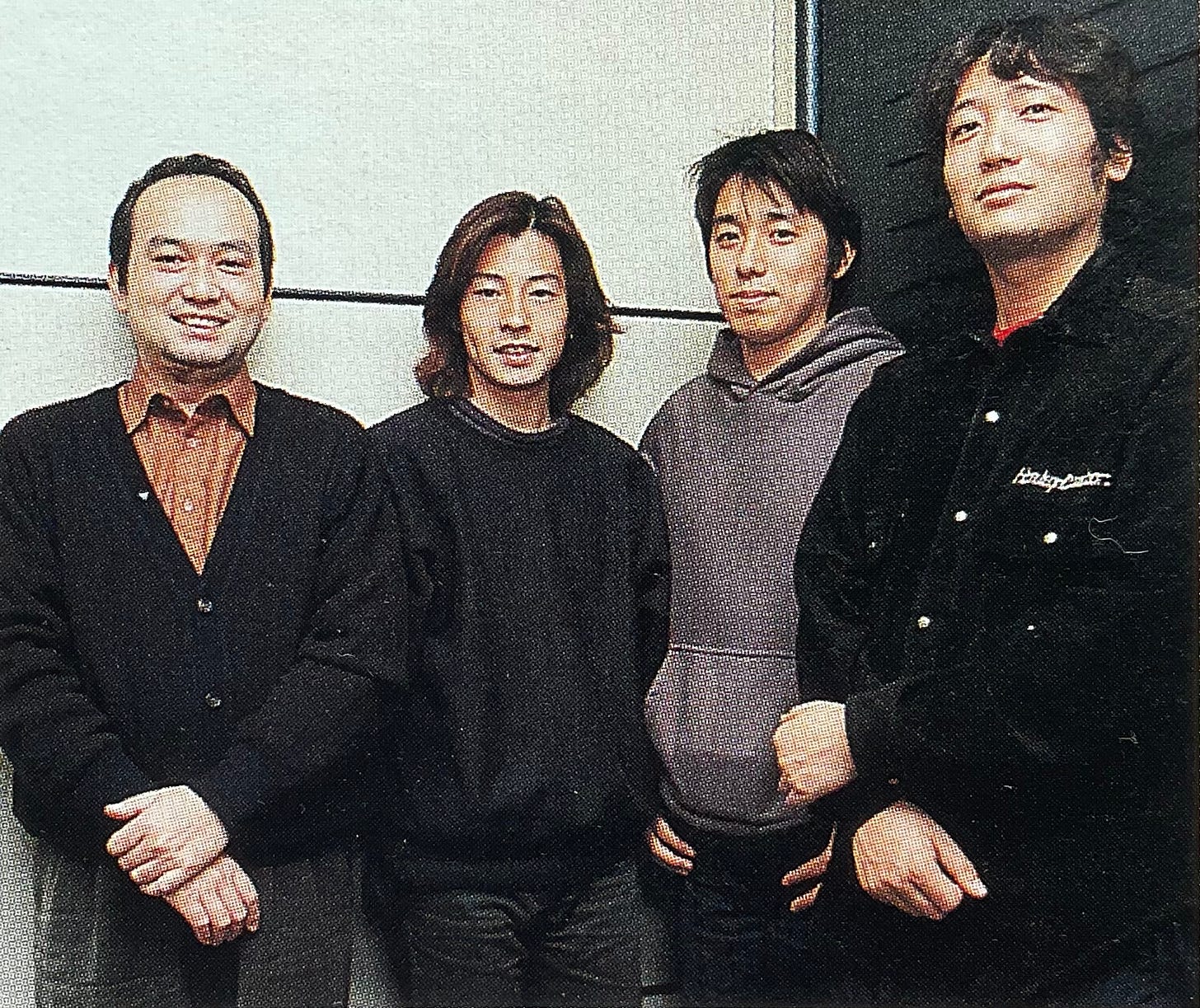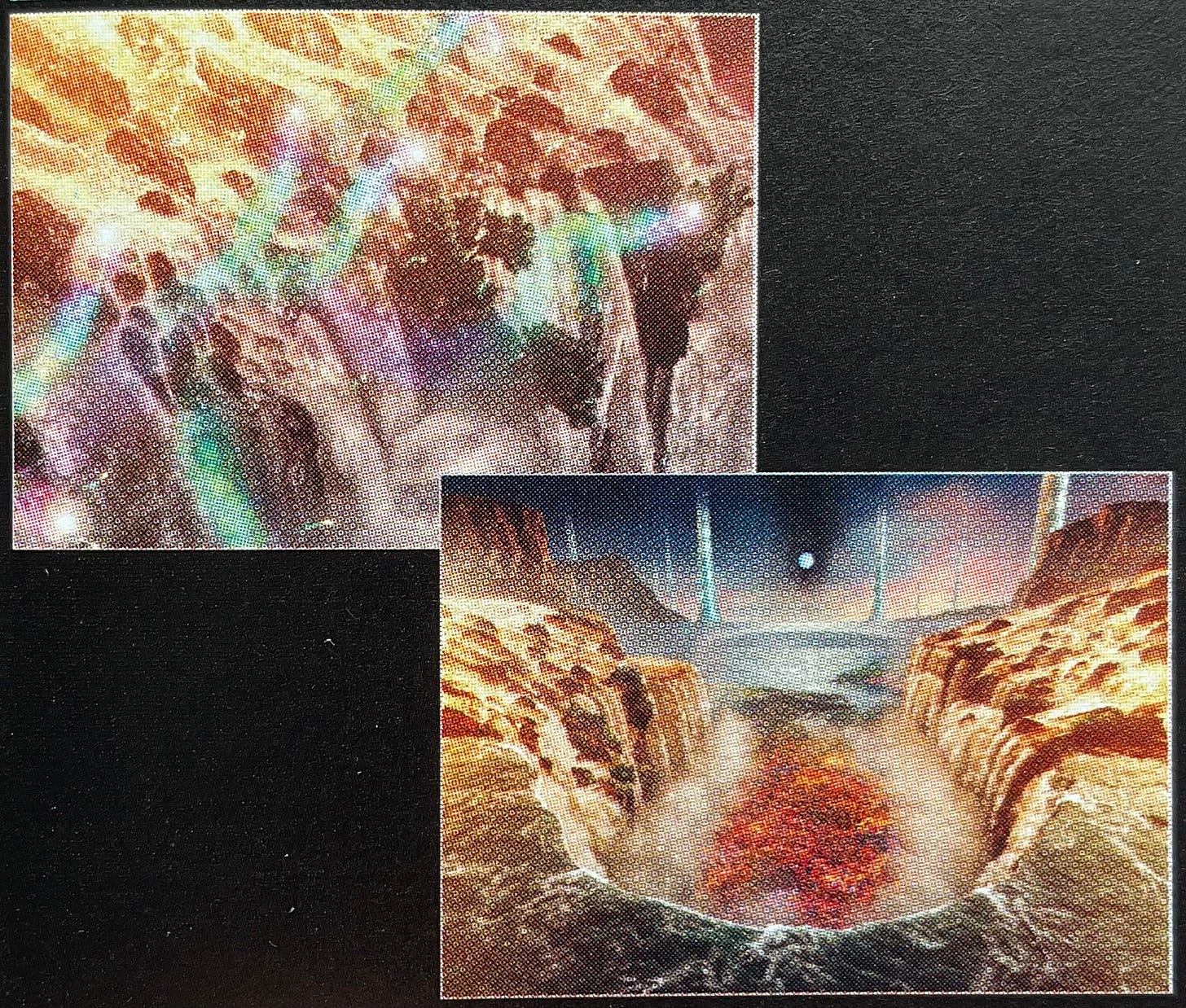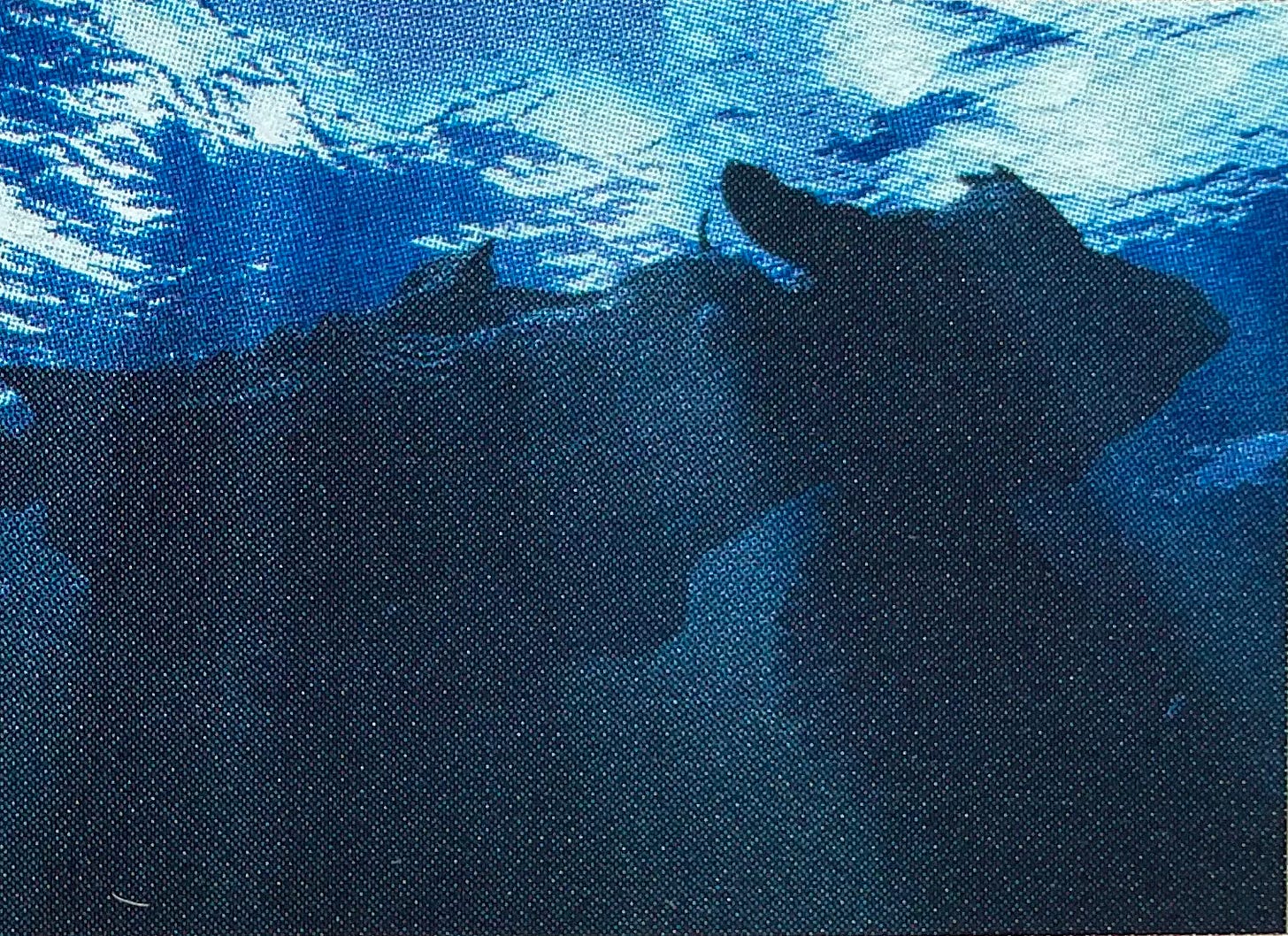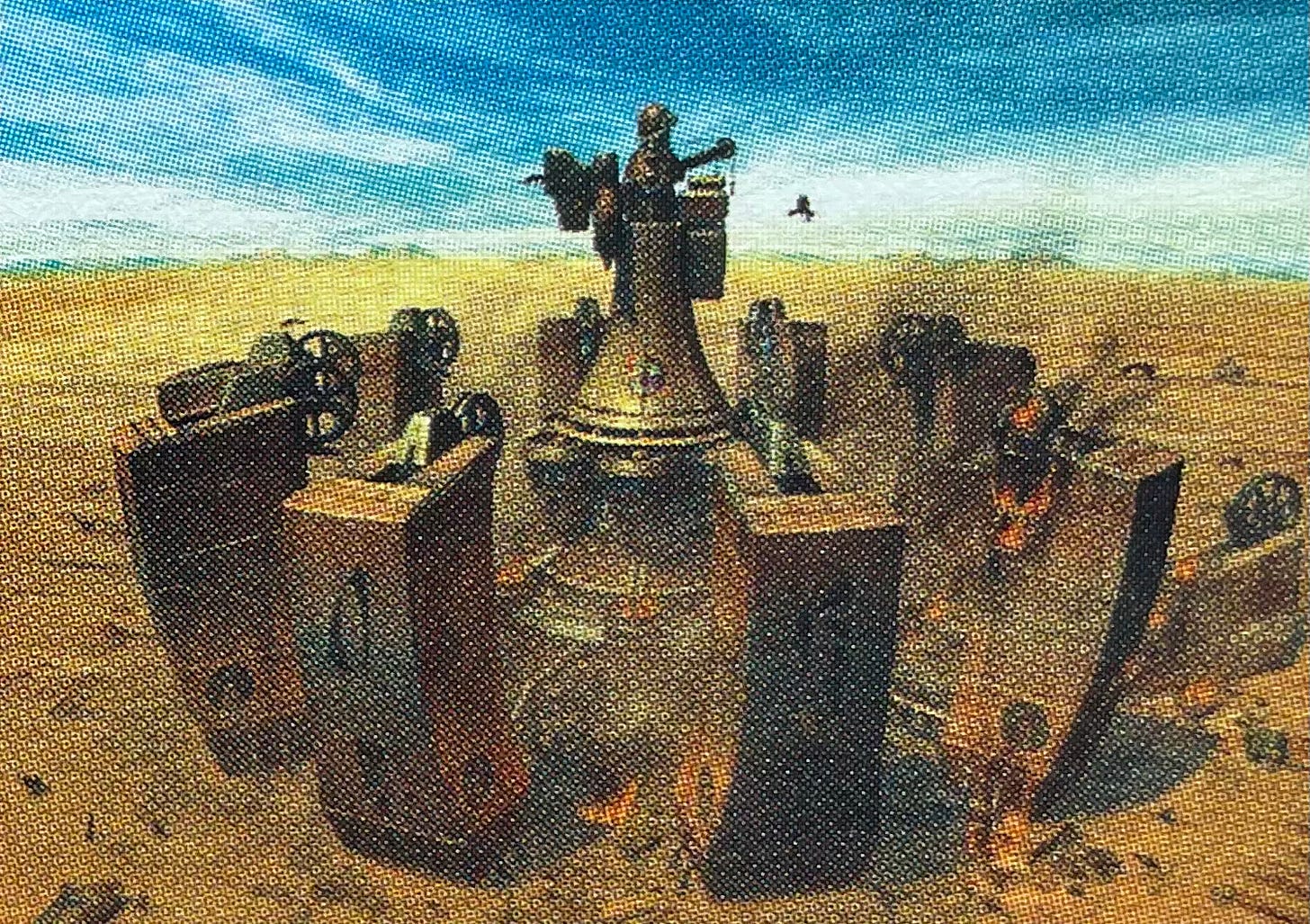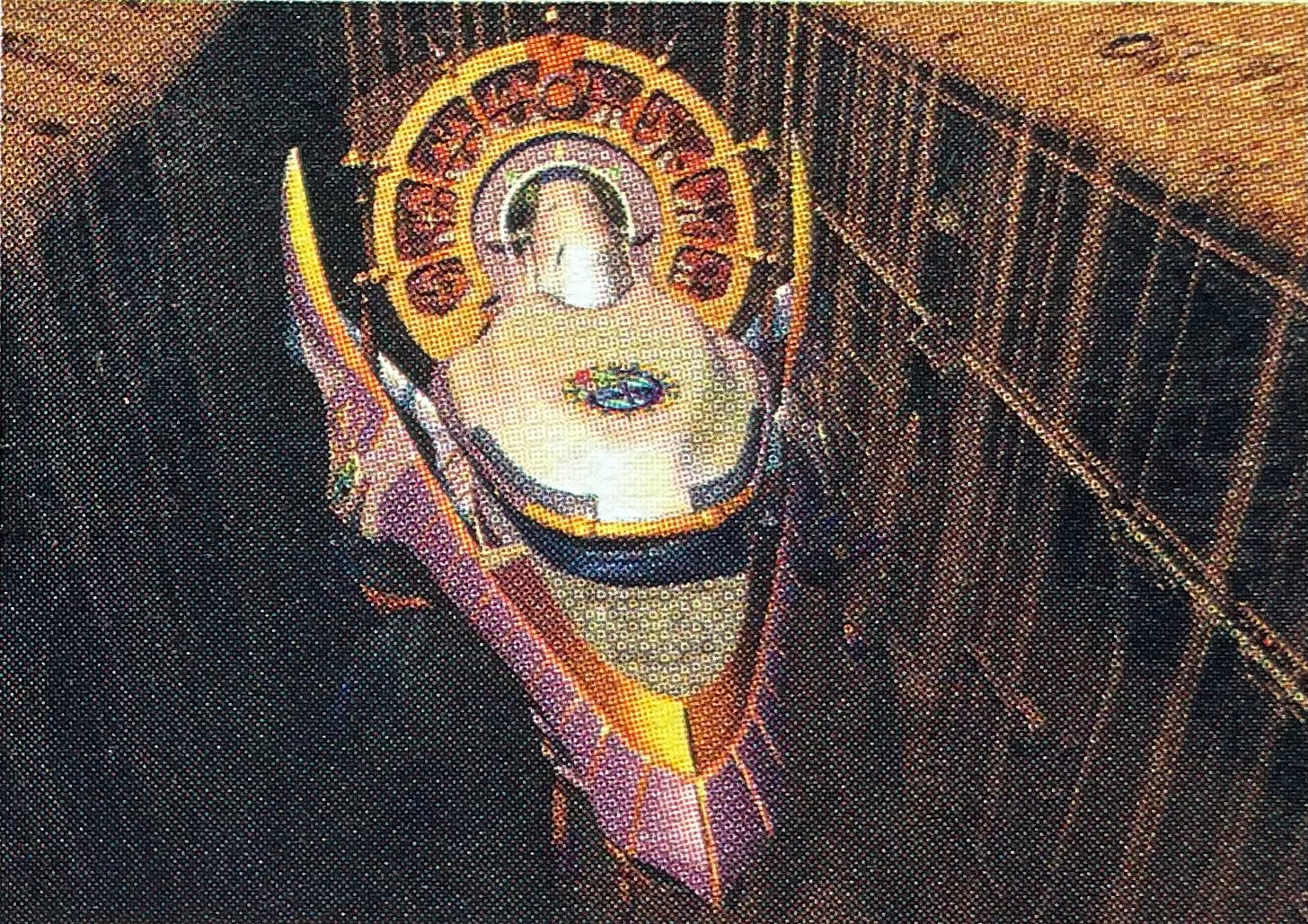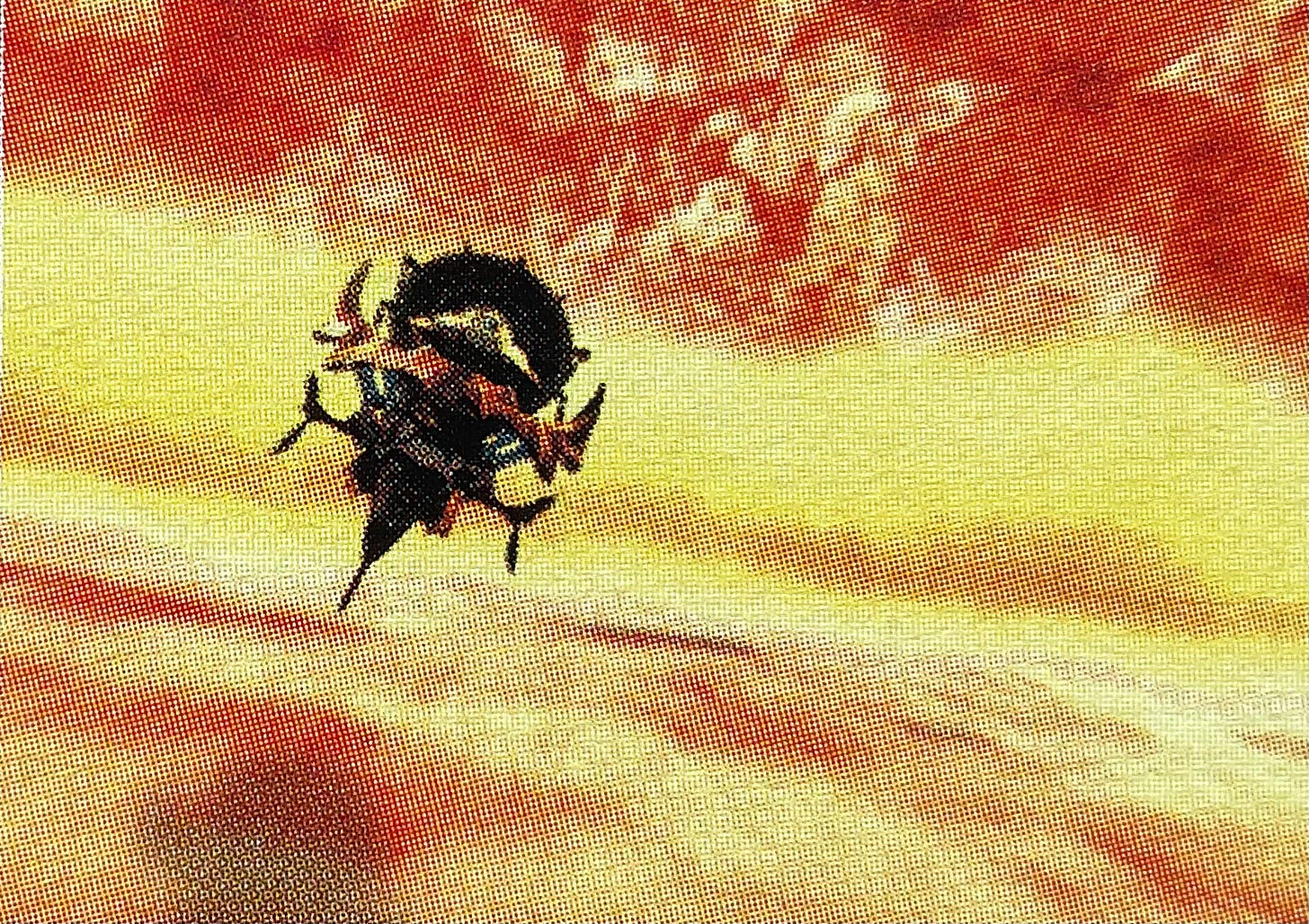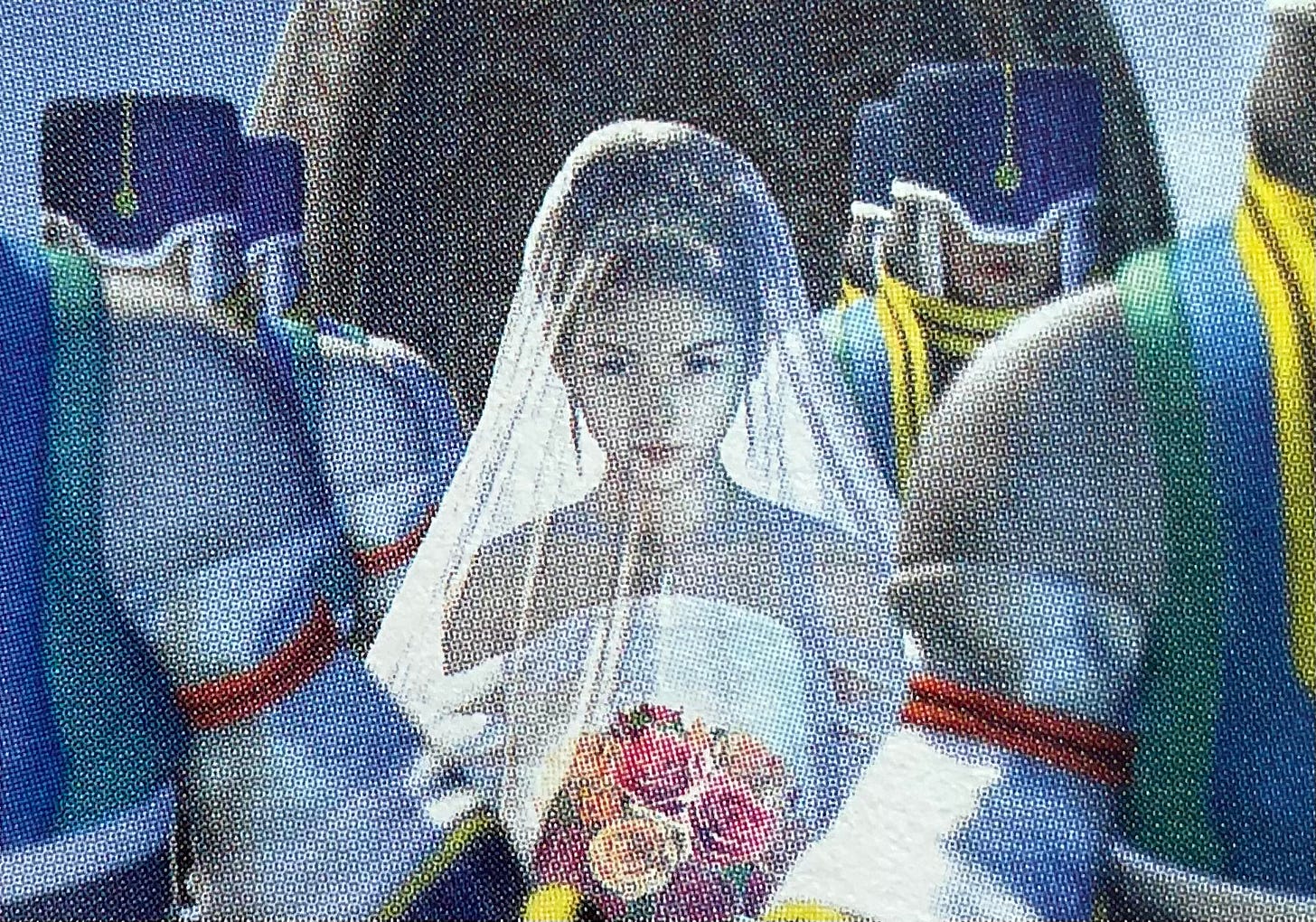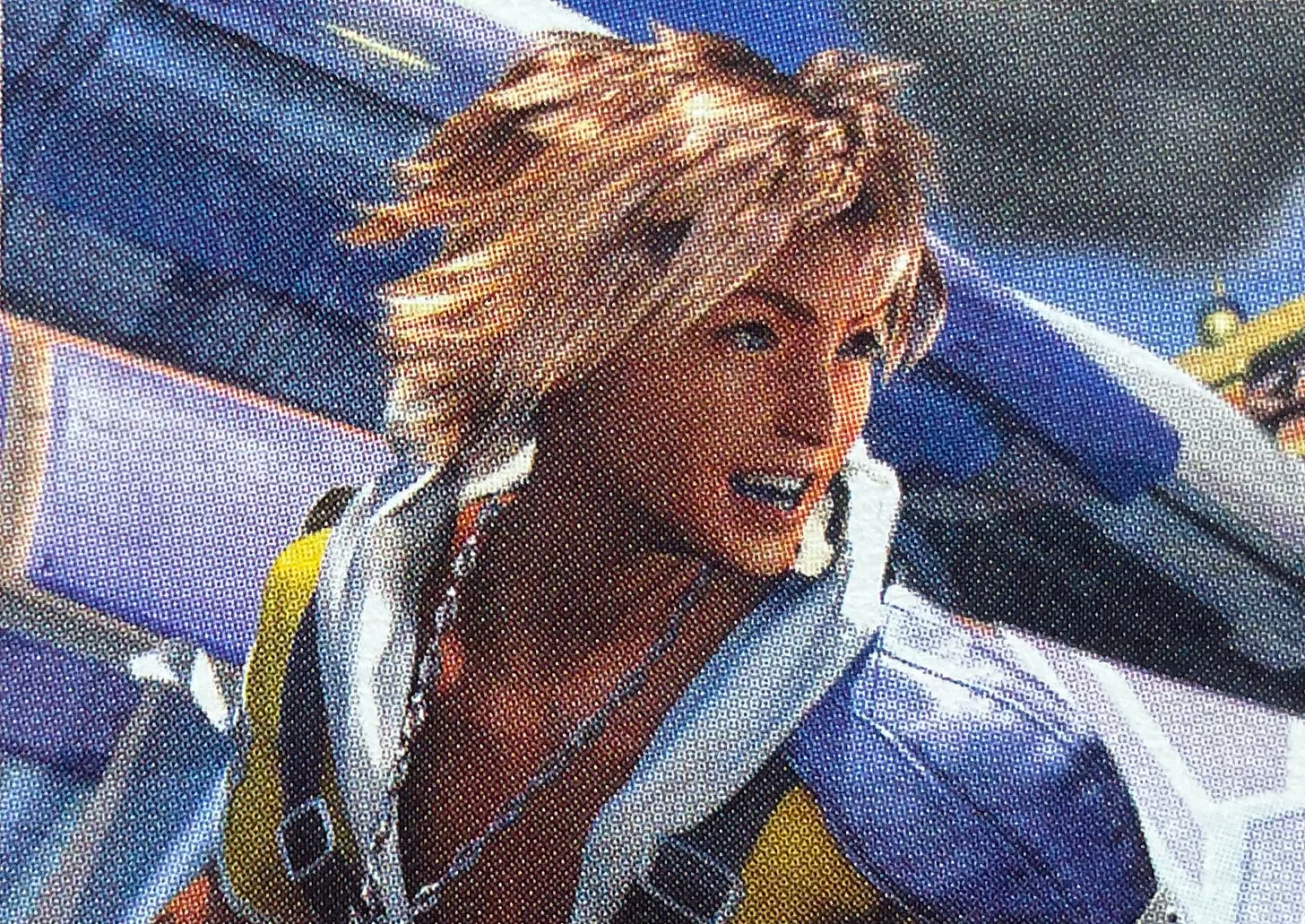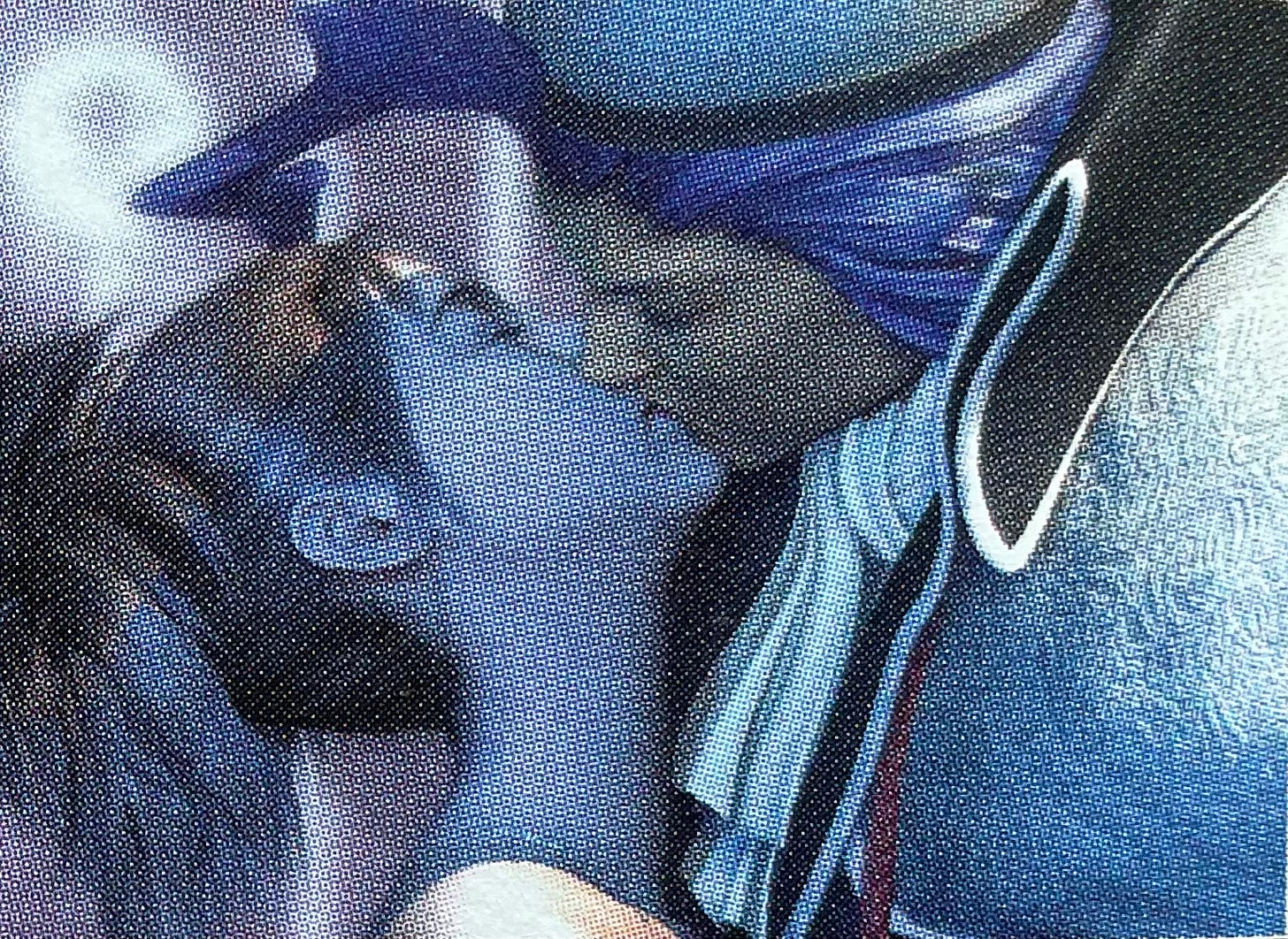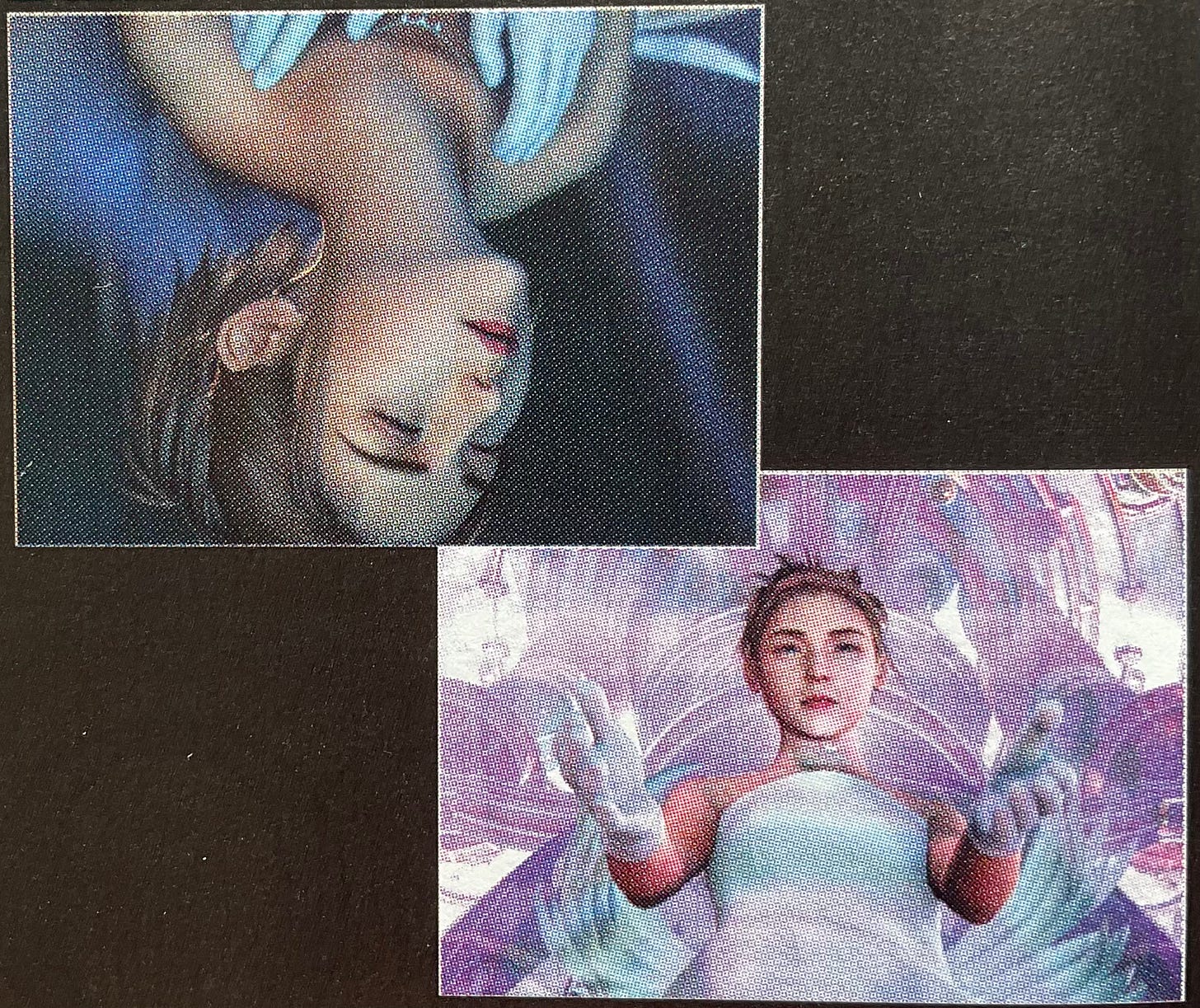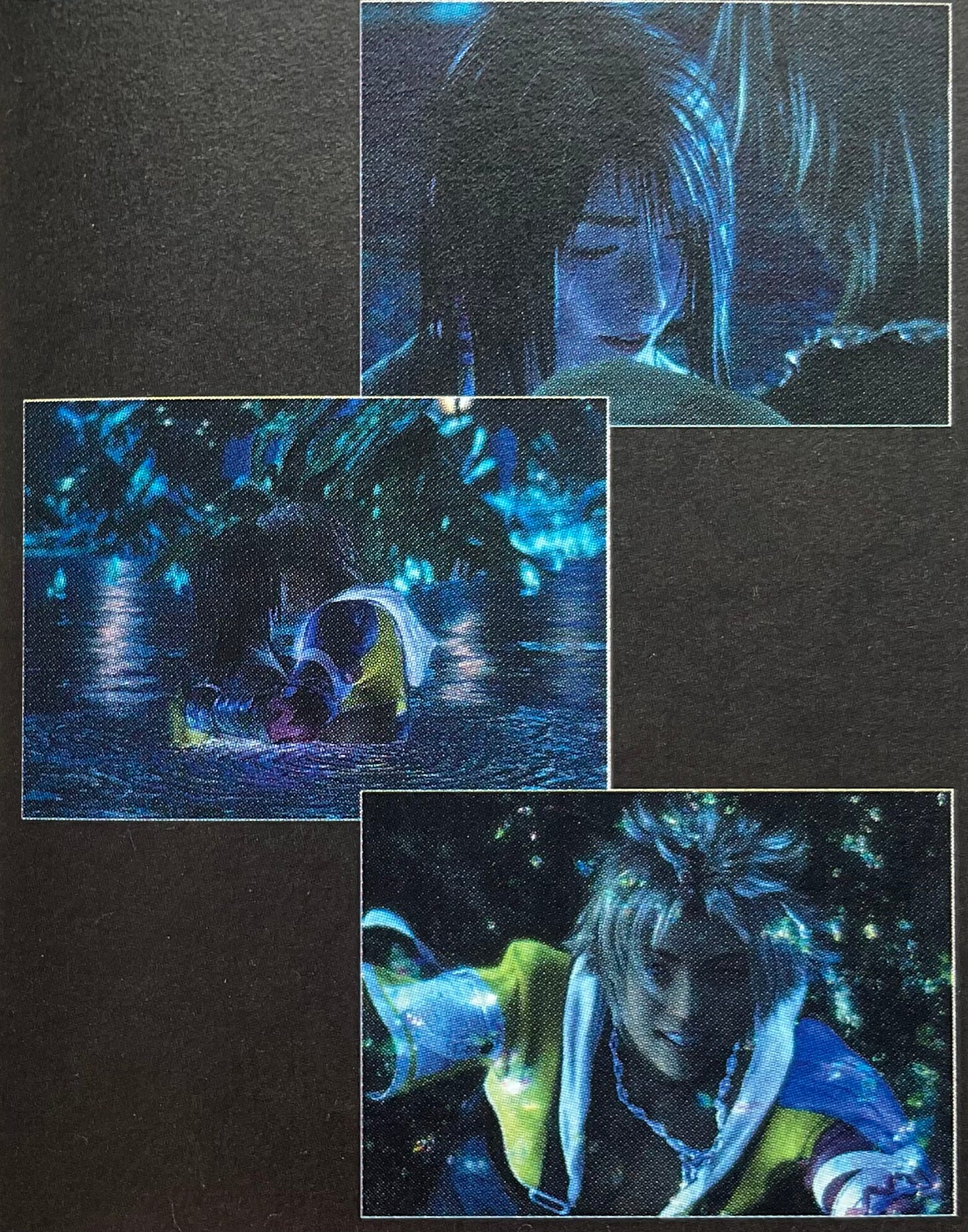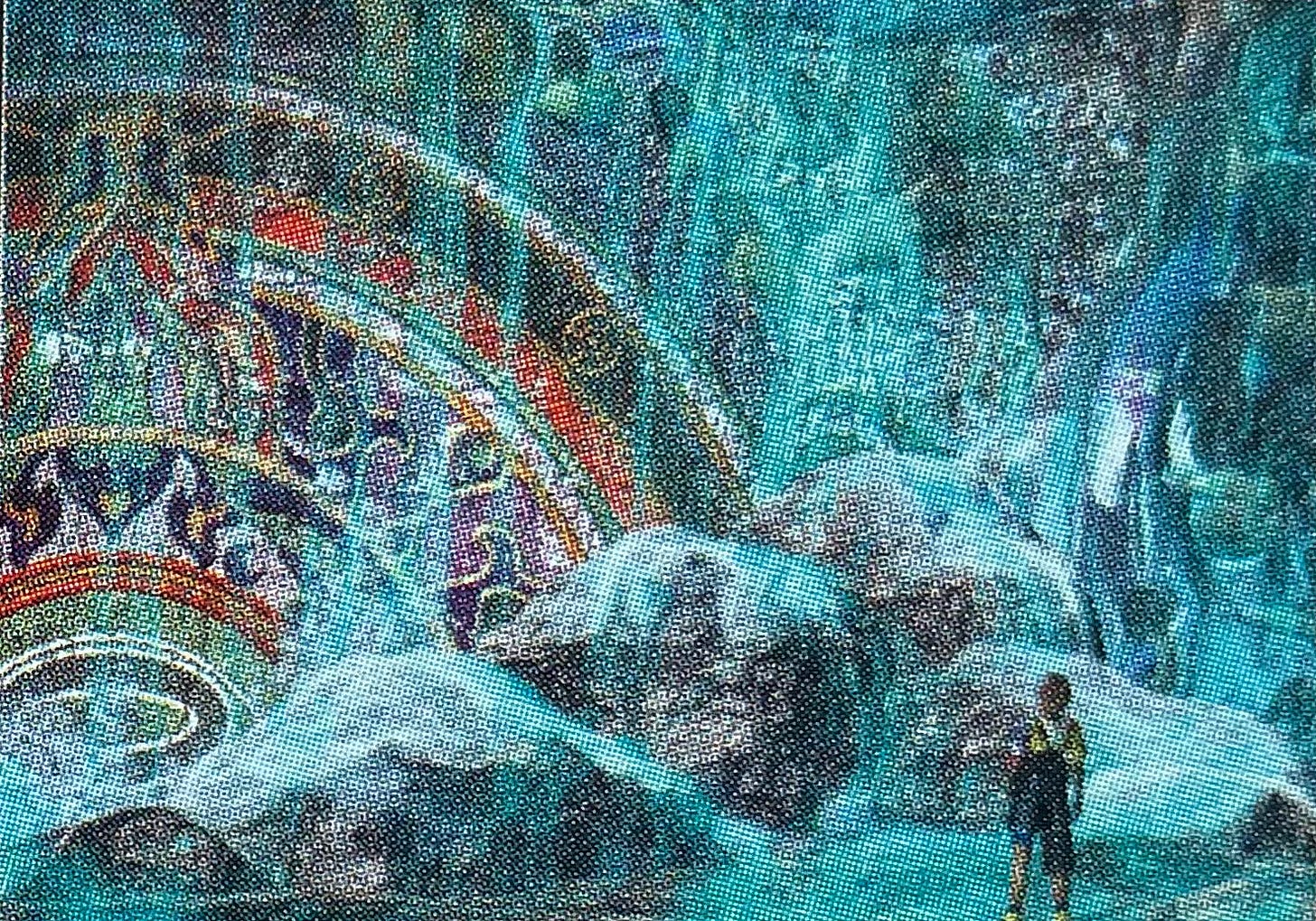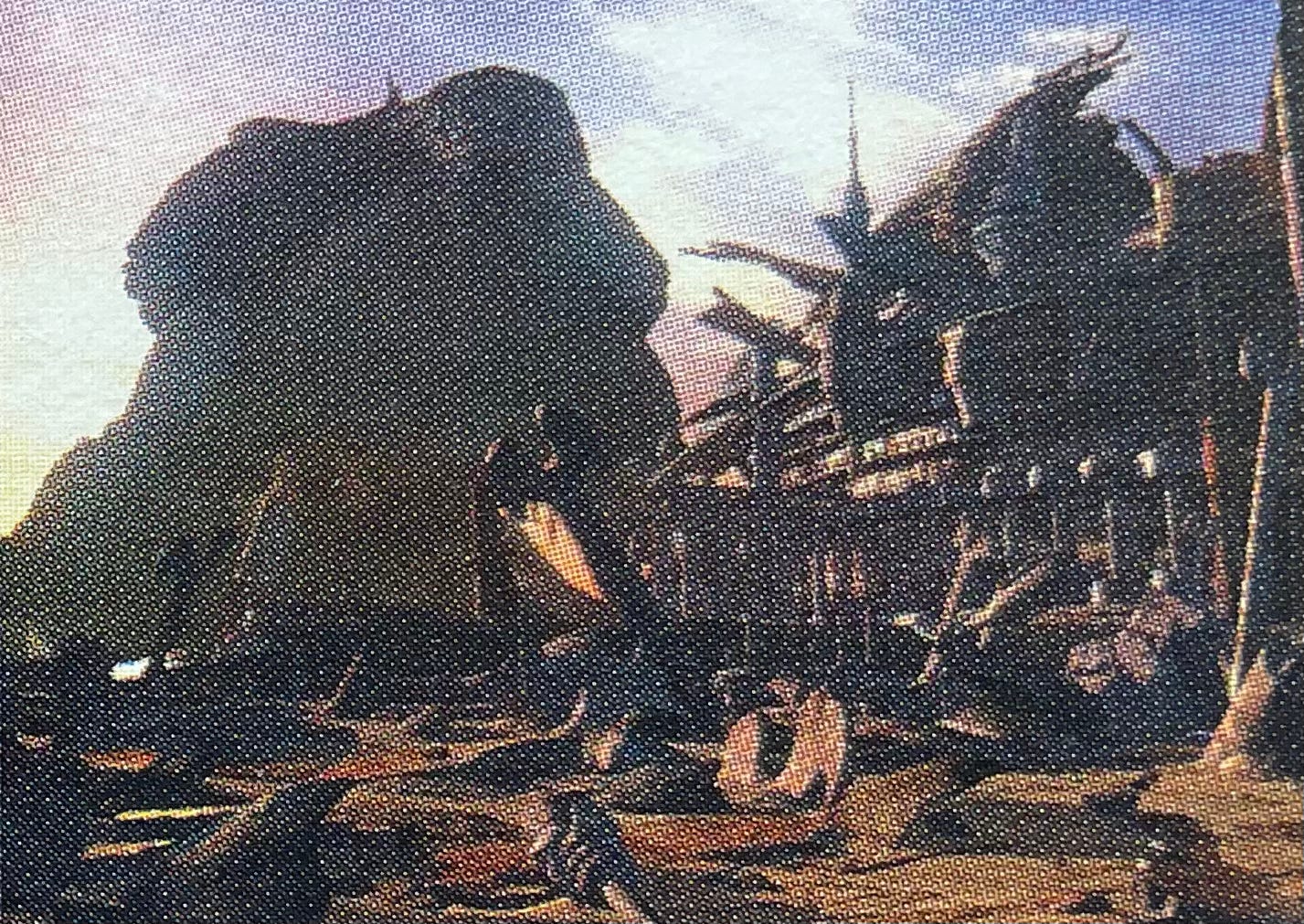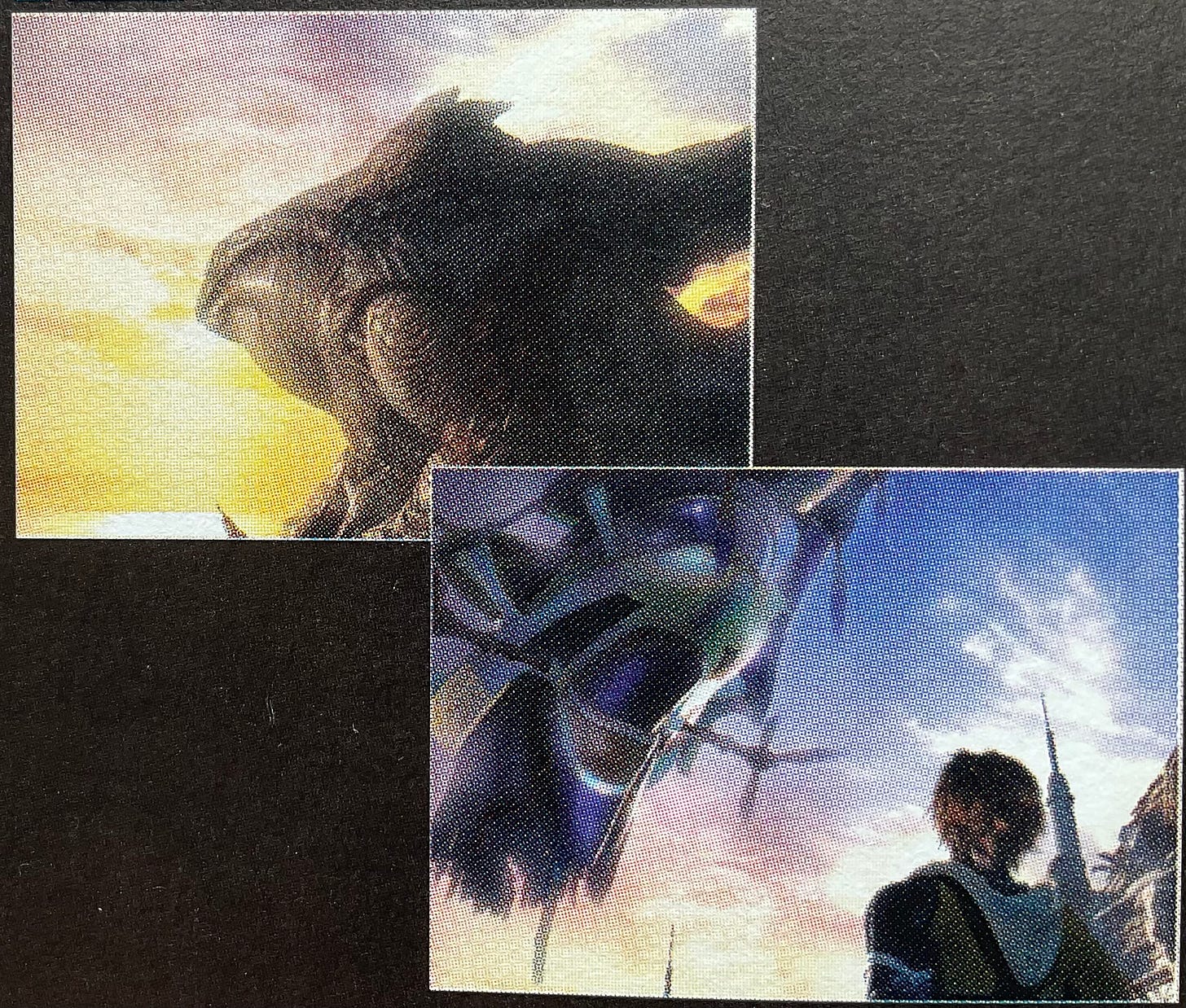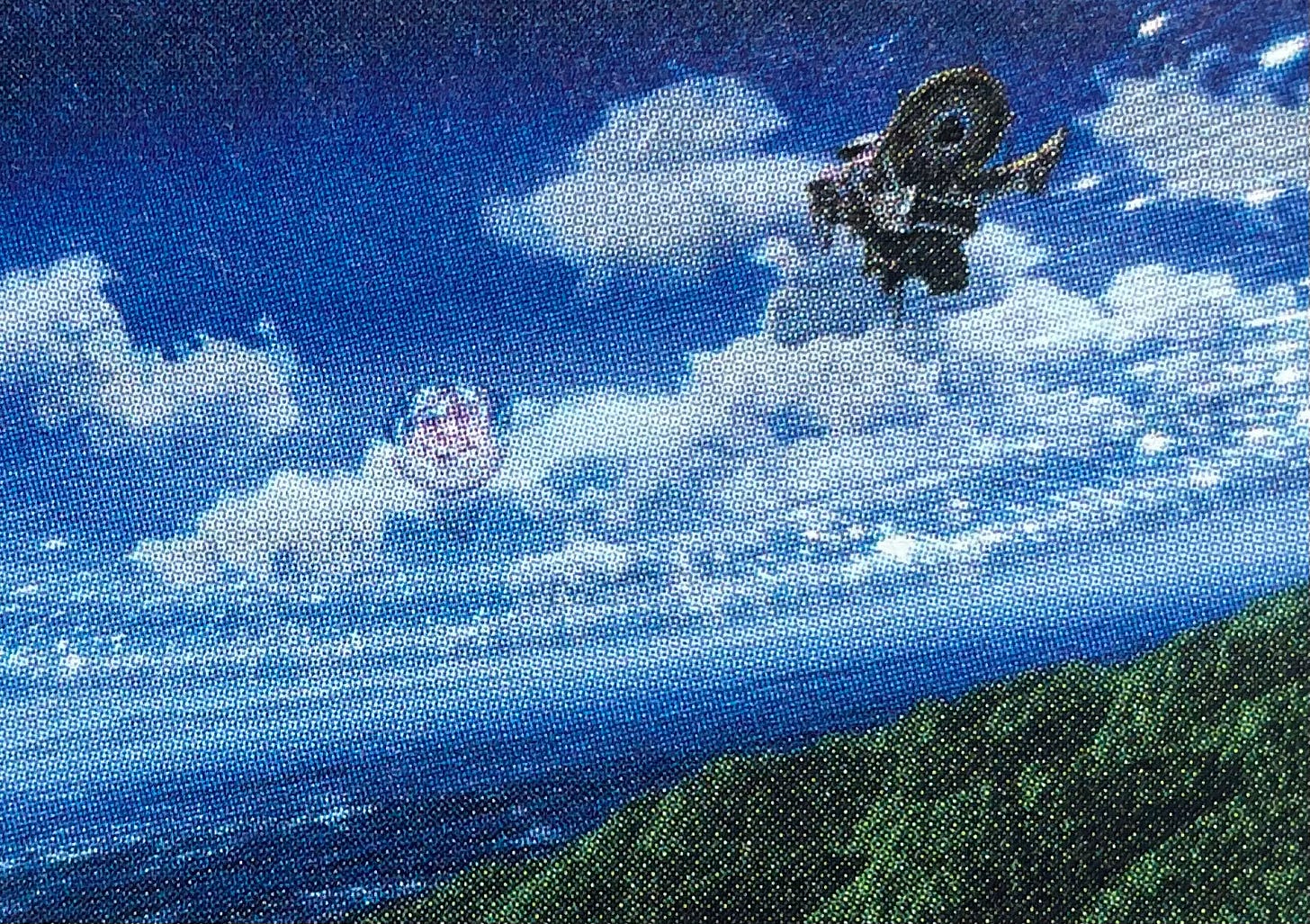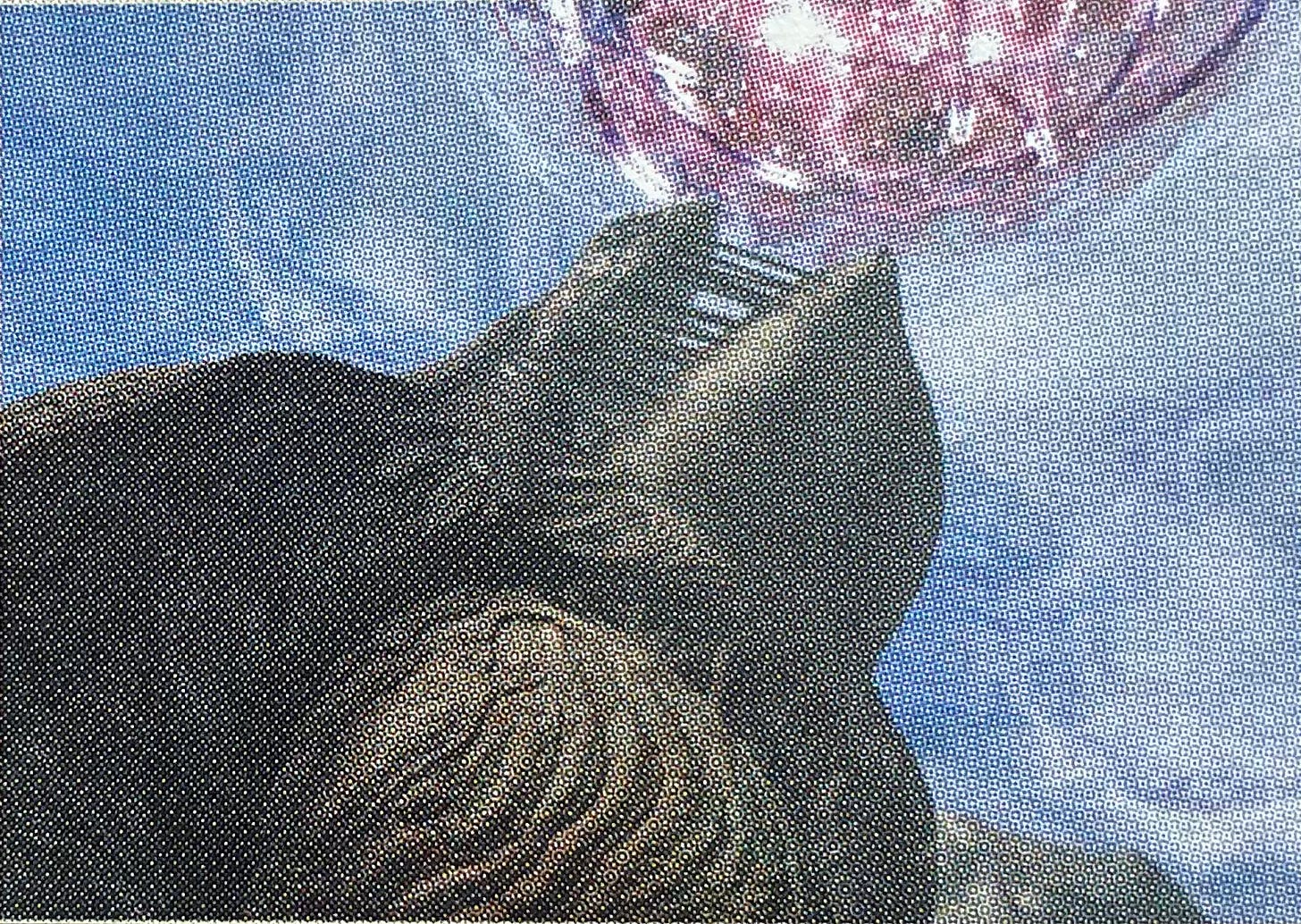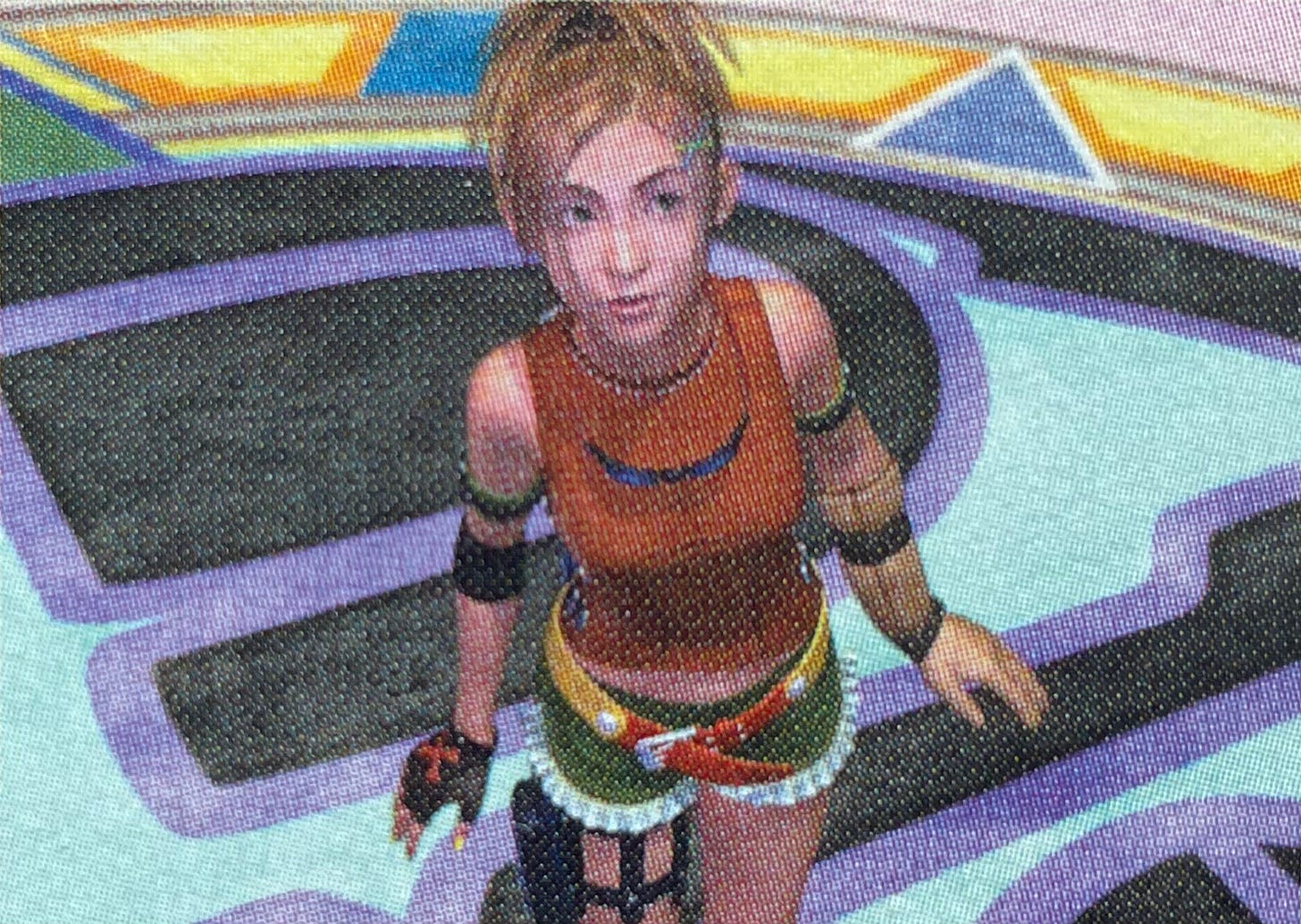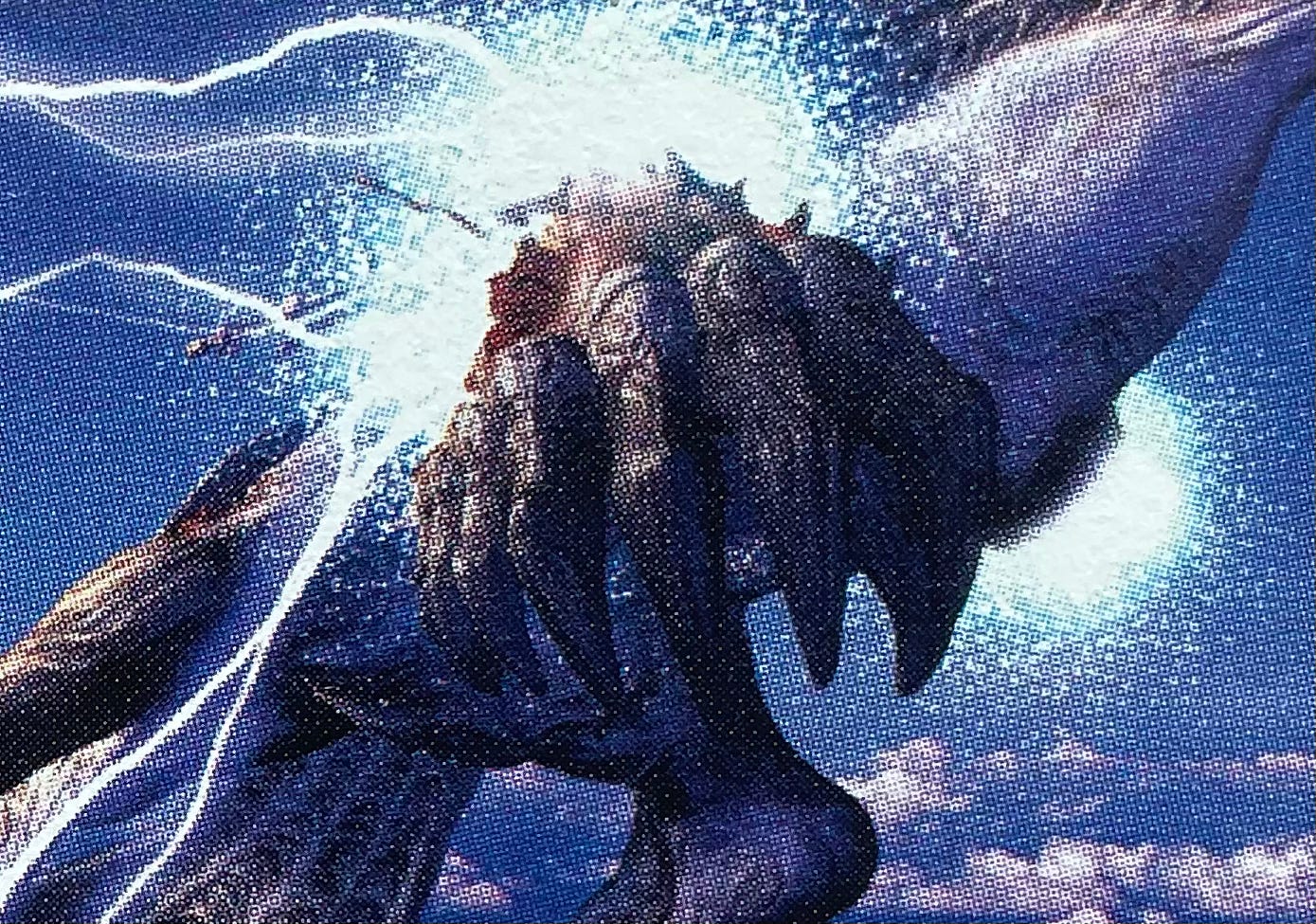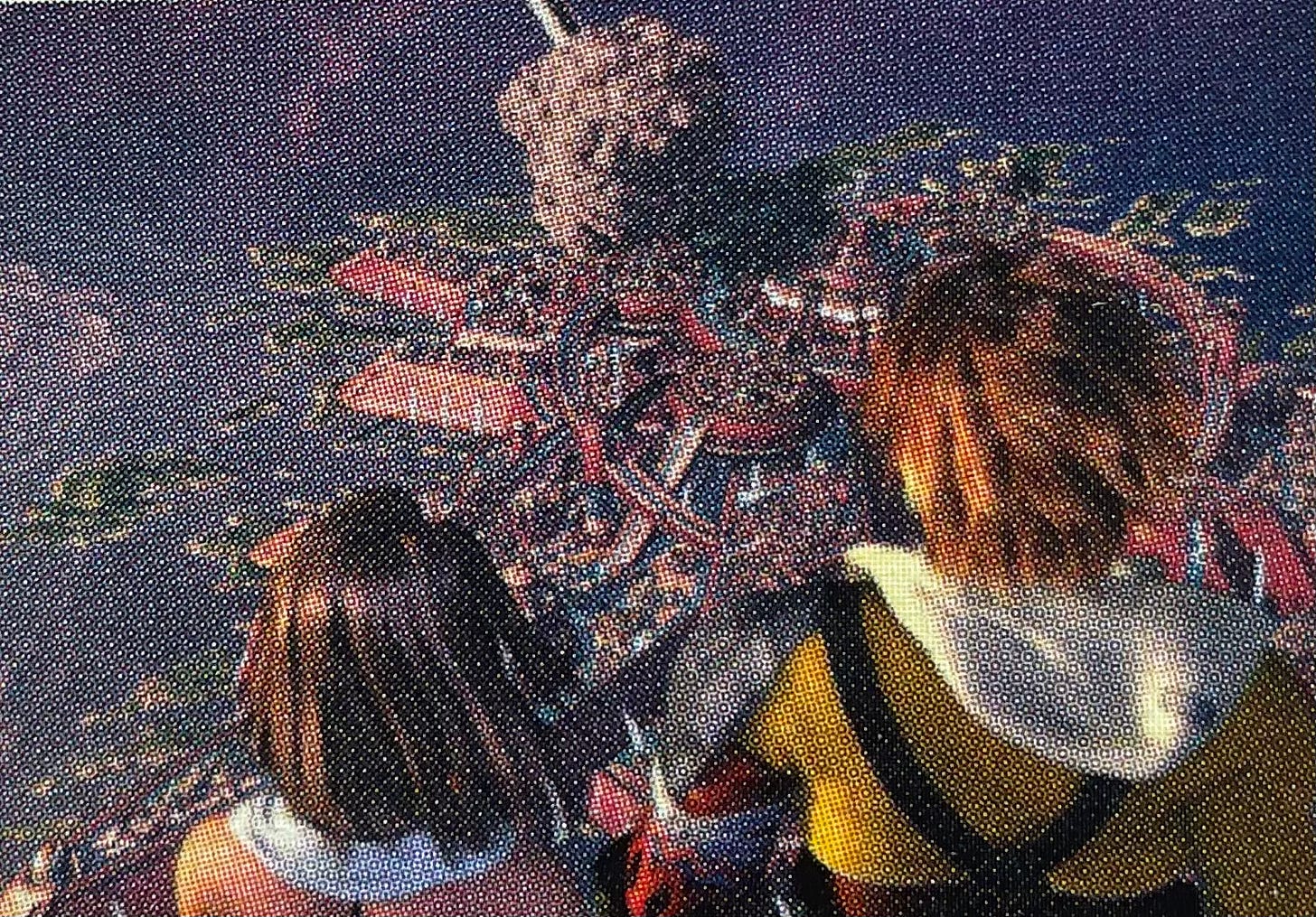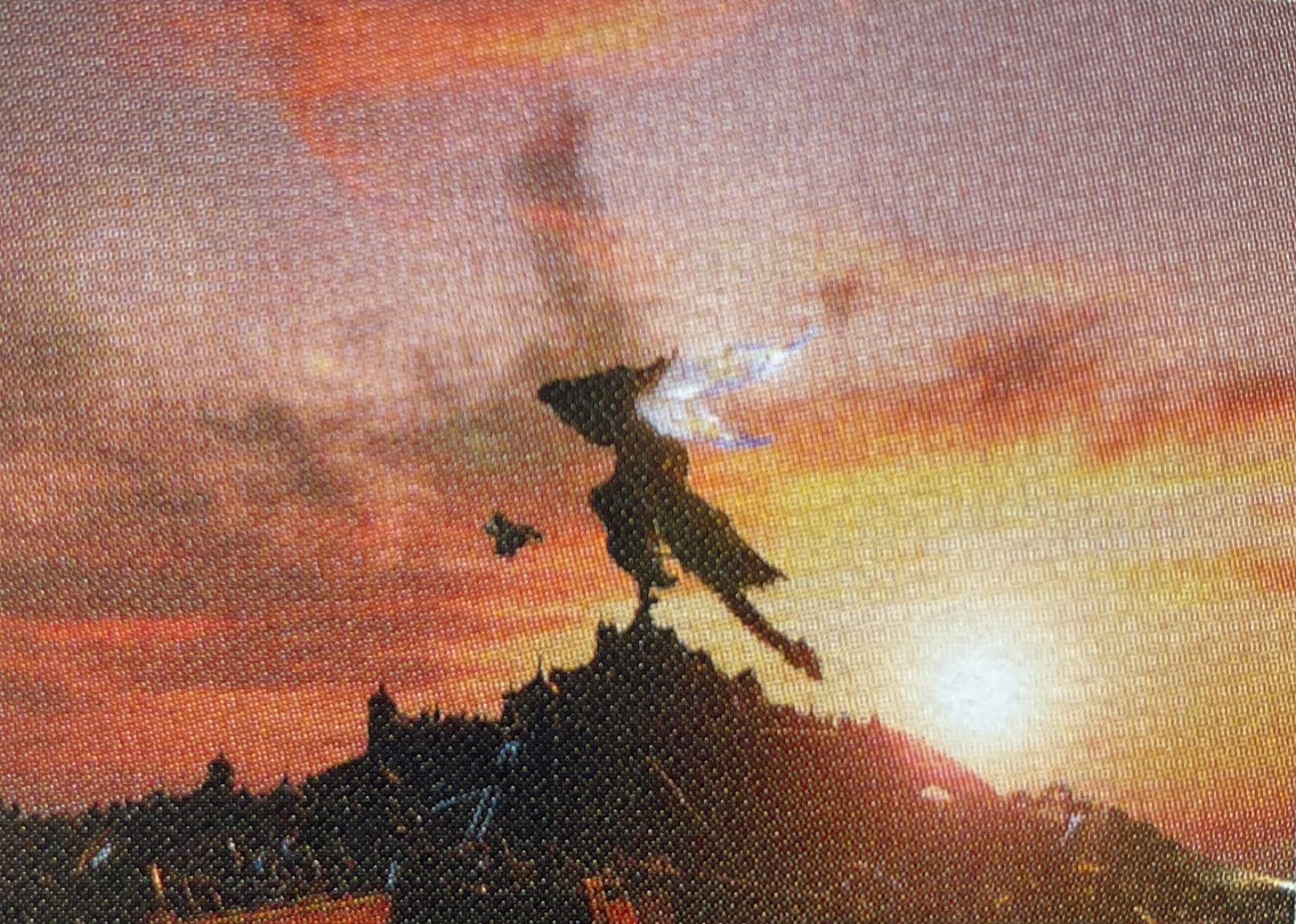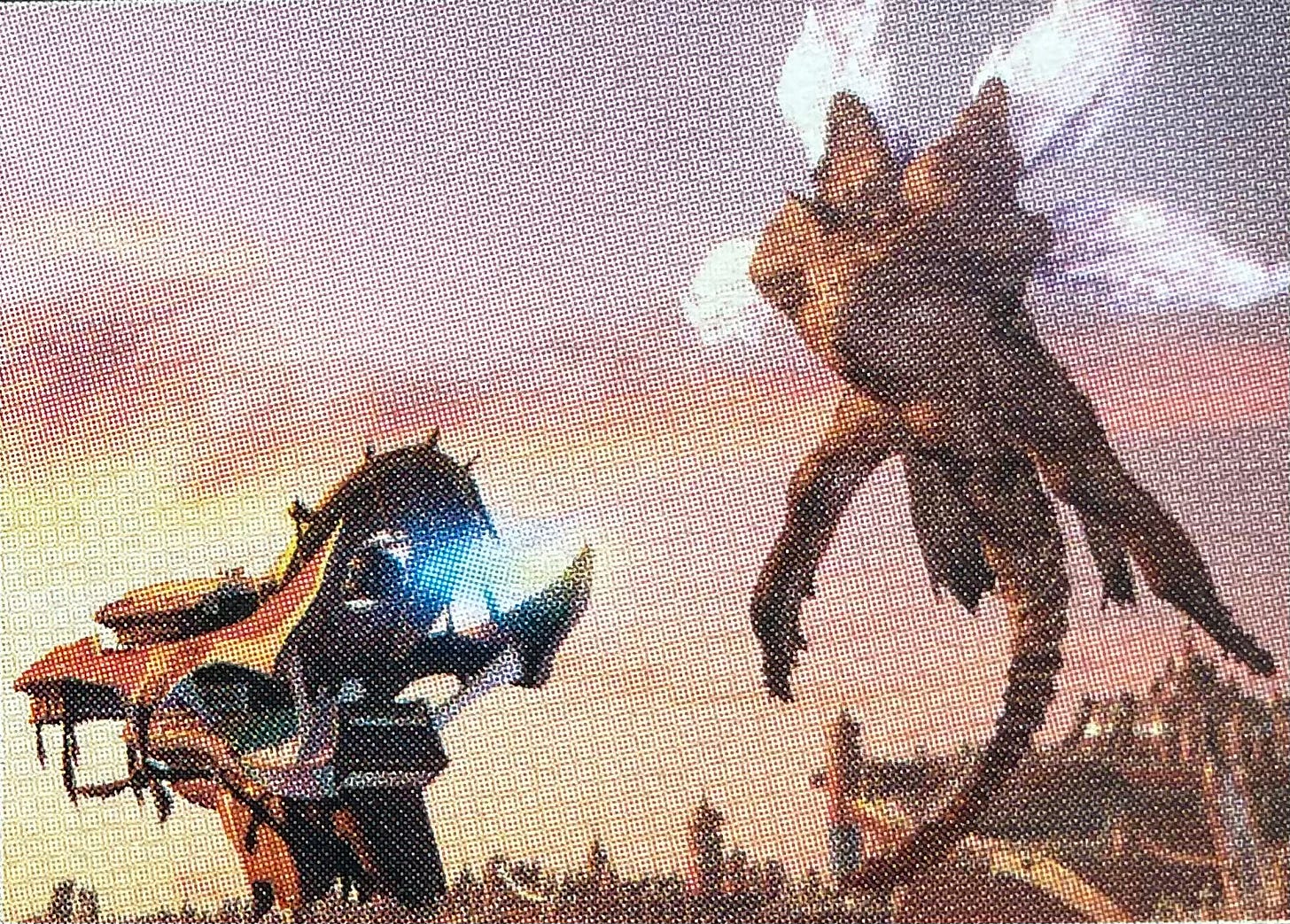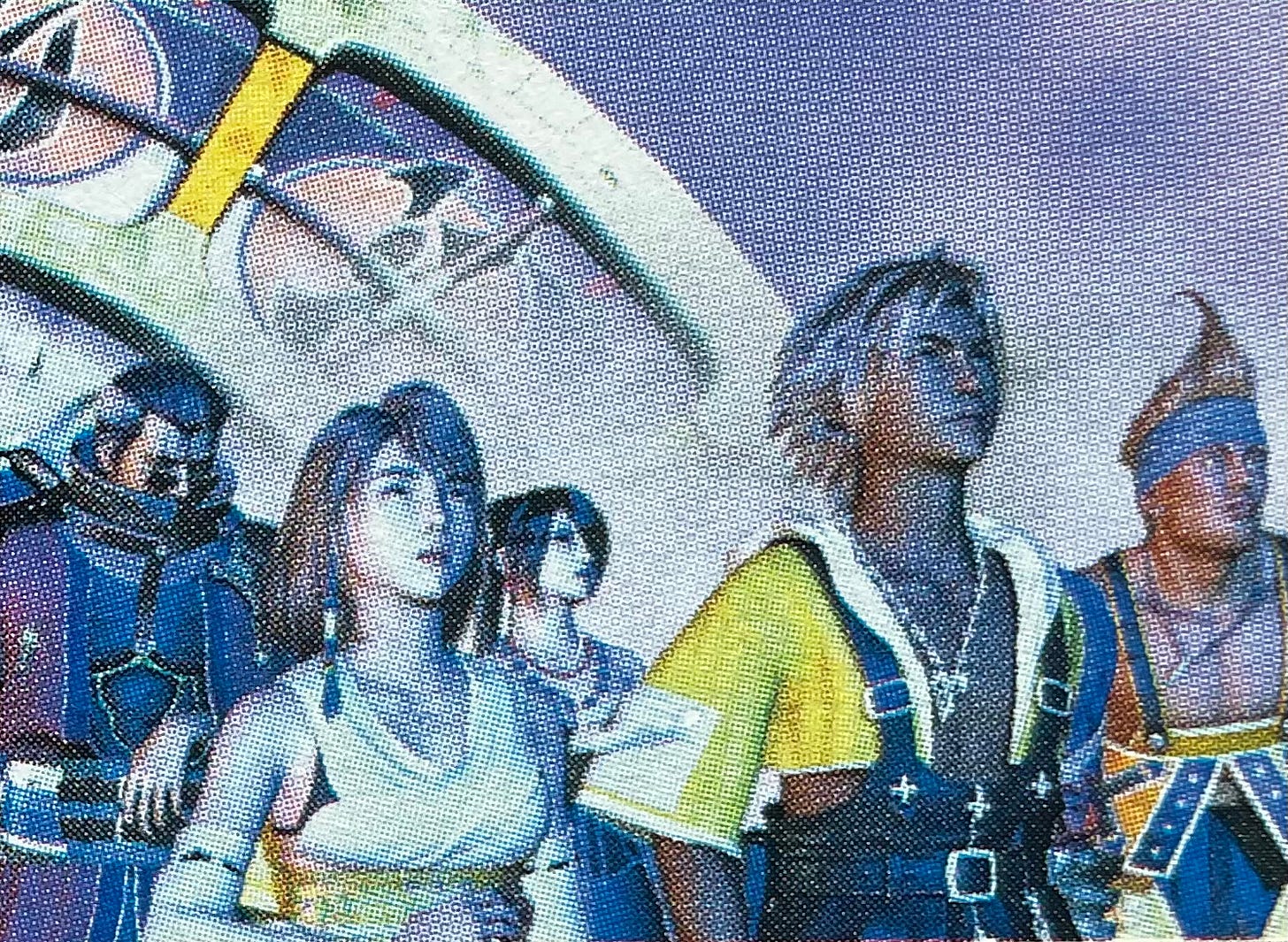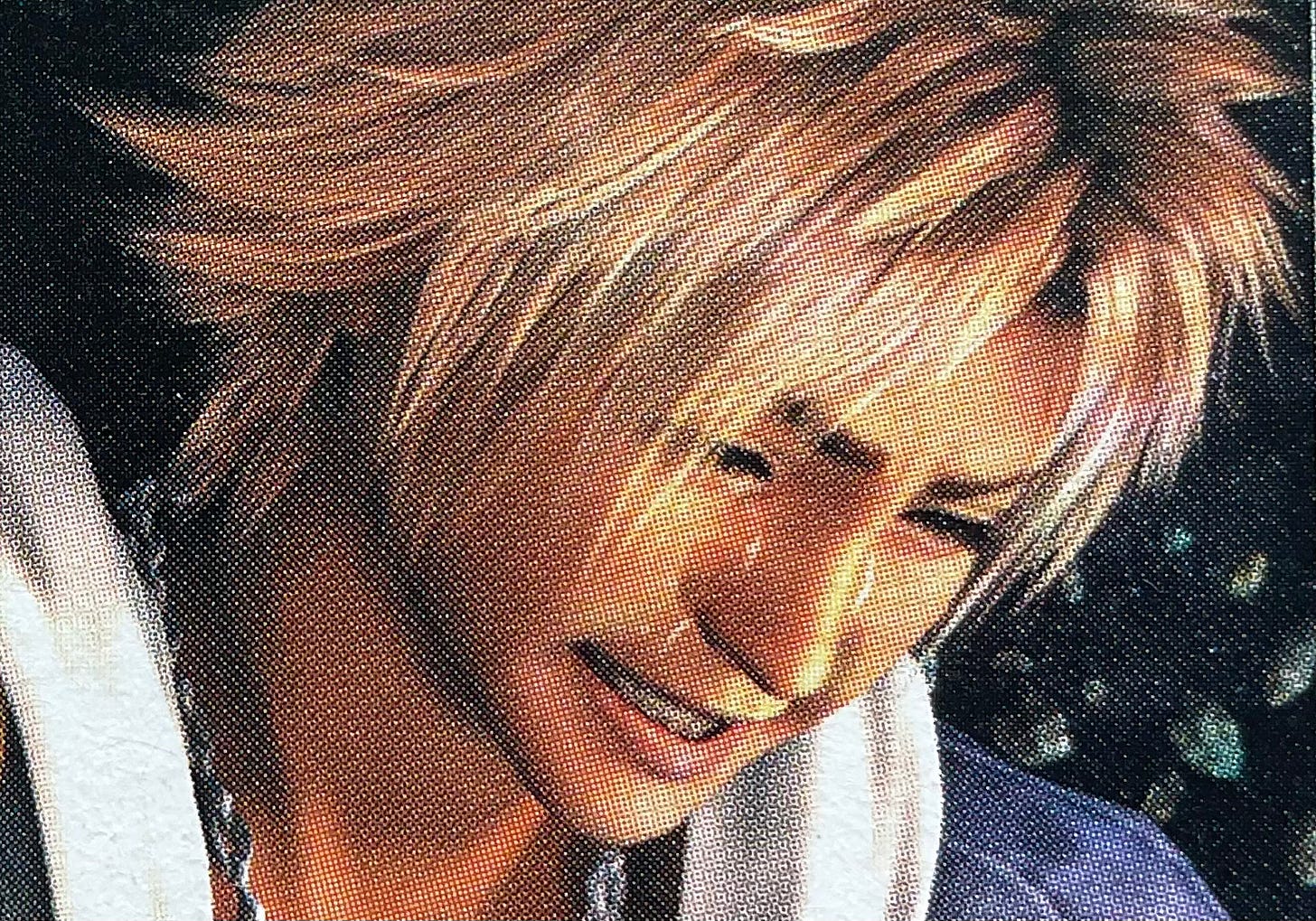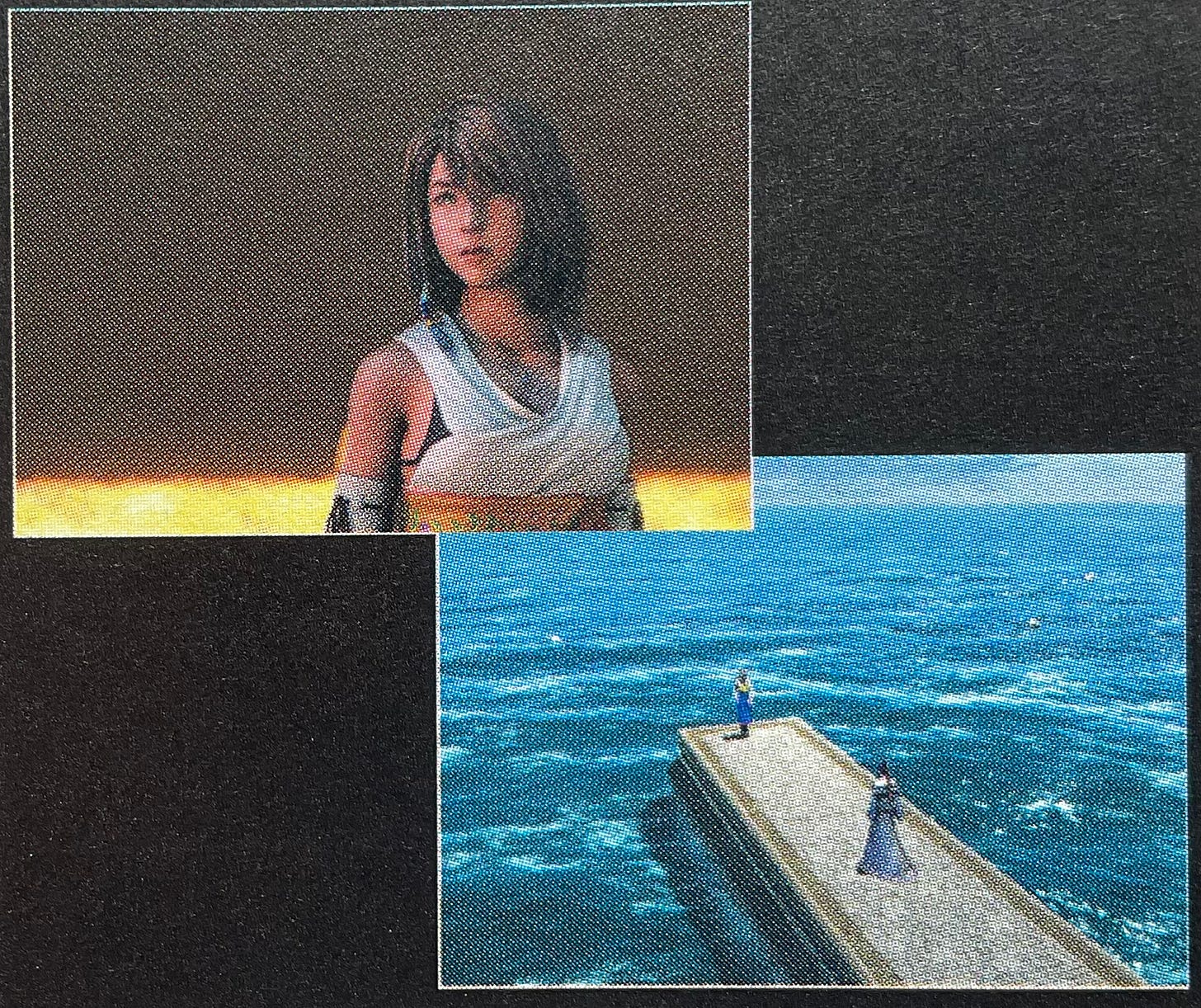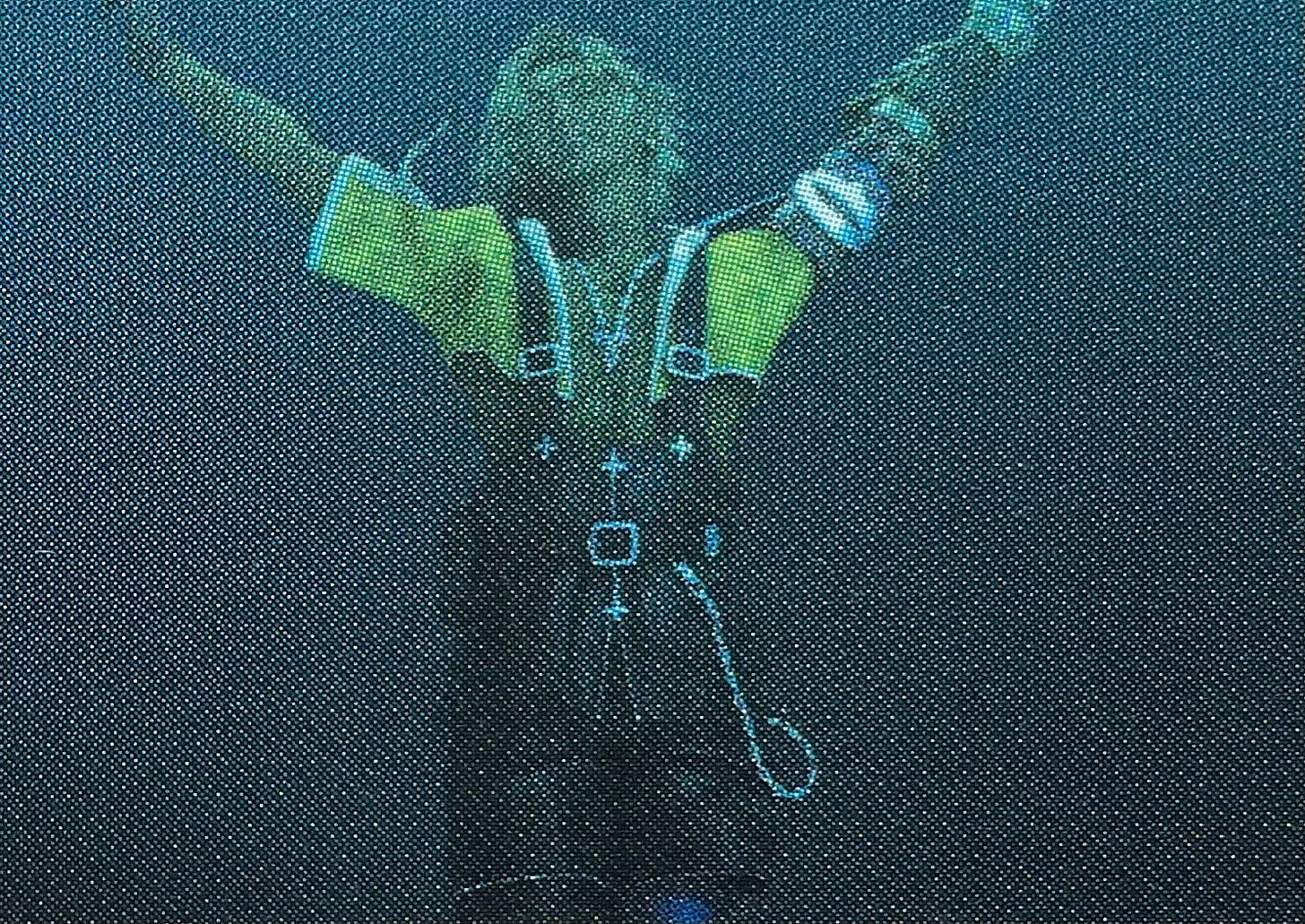Creator's Salon: Movie Team, Part 2
"Members of the Scenario, Sound, Movie, and Graphic teams shared their experiences working on their respective parts. Enjoy the many episodes that have never been revealed before."
We had four representatives from the staff who created the dramatic movies of this work passionately discuss all 53 movies. Additionally, each movie is numbered per the movie number at the Luca Theater.
◆ From left to right: Hiroshi Kuwahara (Movie Director), Toshiaki Matsumura (Supervised character modeling and facial motions), Kei Miyamoto (Supervised character rigging), Kazuyuki Ikumori (Background Supervision) [Titles omitted]
26: Otherworld
Kuwahara: For this movie, Naoyoshi-san’s design of the Farplane was just fantastic, and that alone won us over. While the elements like waterfalls and flower fields are not particularly unique, the overall composition is excellent. I also think the staff did a great job recreating it.
27: Sin Sleeps
Kuwahara: The floating debris in the water represents sea garbage. It might seem insignificant, but having it there versus not makes a huge difference in realism.
28: Homecoming
Ikumori: We were really short on time, so while I wanted to properly simulate the smoke, we ended up using a simpler method, which I still regret a bit. The Al Bhed Home, being built from regular iron plates, was much easier to create compared to something like Zanarkand with its mysterious materials. It's easier to create a presence with an iron fortress through texturing and modeling. Even just adding pipes or rust gives it a significant presence.
29: Dry Dock
Kuwahara: Initially, the disc behind the airship wasn’t part of the design. We decided it would be better if something moved when the ship took off, so we added rotation.
Ikumori: When I first saw the design, I wondered, "What is that disc?" (laughs).
Kuwahara: The rotation really helped to emphasize the sense of the ship starting up.
30: Nayto Du Ku!
Kuwahara: The challenge with the Al Bhed Home scenes was conveying the scale of the airship.
Ikumori: The design of the airship made it difficult to show its size. Initially, we weren’t allowed to add seams or weathering, which made it even harder.
Kuwahara: Adding things like tassels or armor made it harder to convey the size, but I think we managed to express the airship's scale well.
31: Leaving Home
Matsumura: The speed of the airship is incredible.
Kuwahara: Originally, the airship was not supposed to be fast.
Ikumori: Despite the slow speed earlier, it suddenly moves incredibly fast (laughs).
Kuwahara: You can’t have the airship moving slowly while escaping an explosion. If the ship had exhaust nozzles, we could have shown acceleration more dramatically, but it doesn’t have any.
Miyamoto: We used camera work to compensate. This movie has a very distinct camera style compared to the rest.
32: The Glory Of Yevon
Kuwahara: The wedding scene is a highlight of cloth simulation.
Miyamoto: Cloth simulation involves setting parameters for gravity, wind strength, and direction, and creating a similar environment in software to calculate the movement of each vertex in the cloth’s polygons. It’s a technique we use almost all the time in character scenes, but it was used extensively here. With Yuna’s wedding dress, veil, and the detailed movements of the feathers, simulating each part required up to a day per cut.
Kuwahara: Cloth simulation has been around for a while, but rarely used on such a large scale.
33: The Red Carpet
Kuwahara: It was challenging to compose this scene. When I first heard about Tidus doing a somersault, I thought, “Are we really doing this?”
Matsumura: I thought it might be excessive at first too.
Kuwahara: But seeing the finished product, it turned out really impressive. It was even used extensively in commercials.
34: False Vows
Kuwahara: This scene reminds me of Yuna’s gloves.
Miyamoto: We actually forgot to include gloves for Yuna until the very end. Not just in this scene, but in the previous one as well (laughs).
Kuwahara: Because they are semi-transparent, we had to make them look like a thin layer over her hand model. When we first noticed, I was in a panic, wondering if we could fix it or if people might not notice (laughs).
Miyamoto: We quickly created the glove polygon model and composited it later.
Matsumura: Also, the kiss scene between Seymour and Yuna was quite long. To make it work, we consulted with the programmer to create a lip movement tool specifically for this scene.
Kuwahara: We also focused on the subtle changes in Seymour’s expression before and after the kiss.
Matsumura: Adding expression to Seymour was interesting throughout. We based his look on a Dracula-like image, hoping to capture his tragic side.
35: Believe
Miyamoto: The animator responsible for Valefor’s movements had to decide what was realistic and what was artistic interpretation.
Kuwahara: With real-world movements, you can get criticized for inaccuracies, but with fictional creatures, it’s about creating something visually convincing. It’s a showcase of the animator’s skill in making the creature believable.
36: The Spring
Kuwahara: This was a tough movie in many ways. It's difficult enough to animate underwater, and here we had the added challenge of two characters intertwined. On top of that, we needed to represent wet hair and include numerous crystals around the spring. Honestly, I’m just glad we managed to complete it.
37: The Summit
Ikumori: This scene was challenging because we had a lot to convey in a short time. We had to explain the presence of a group of praying figures, a lake in the background, something emerging from the lake, ascending into the sky, and the mountain you need to climb, all within about 30 seconds.
38: The Last Chapter
Ikumori: In the game, the ruins of Zanarkand don’t have many buildings due to polygon constraints. However, in the movie, there are no such limitations, so we initially created the city according to the concept art. But we were asked to reduce the number of buildings to avoid too much disparity with the game’s background, which was a tough decision.
39: Sinrise
Kuwahara: Sin’s eyes are moving in this scene. Originally, we didn’t plan to animate them, but since we were animating the model for the battle scenes, we decided to animate the movie version as well. It was important to maintain consistency across both.
40: Departure
Ikumori: One key point was reusing as much material as possible. Also, expressing the massive scale of the airship was particularly challenging compared to other scenes, especially since it’s shown alongside Sin.
41: The Approach
Kuwahara: One highlight of this movie is the monitor cursor. It was designed by Naoya-san, and its shape and movement are quite unique and interesting.
42: Terra Graviton
Kuwahara: I really like the use of short movies as accents during real-time polygon events. It’s effective and engaging, not because it’s easy, of course (laughs).
43: Gravity Sucks
Kuwahara: We created a model of Sin with an open mouth just for this movie. As the mouth opens, the band connecting the upper and lower jaws stretches and eventually snaps, which is one of the highlights.
Ikumori: We said we wouldn’t use it this time, but in the end, we ended up showing space (laughs).
44: Heaven’s Fall
Kuwahara: In the development version, the timing for layering the fire effects was off, and at one point, Tidus completely got engulfed by flames as he jumped. The staff found that really amusing.
45: Vena!
Kuwahara: This scene was inspired by the quick draw in the movie The Good, the Bad and the Ugly. It was a directive from Naoyoshi to create that feel. The design of the armor on the underside of the airship was intended to evoke the image of a gunslinger flipping his cape to draw his weapon. I was impressed by how thoroughly that concept was thought out.
46: Machina Redux
Matsumura: The scene where Sin’s arm falls off has a sort of special effects vibe (laughs).
Kuwahara: That was intentionally done to capture that giant monster dramatic flair. Some staff even felt a bit sorry for Sin (laughs).
47: Sinfall
Matsumura: The whole party is hilariously clinging to the impressive features of the airship (laughs).
48: Evenfall
Matsumura: Sin looks really impressive in this scene, it’s very cinematic.
Ikumori: Originally, Sin wasn’t that large. It was about the same size as the airship. To create a more intimidating presence, we subtly adjusted its scale for the movie. Although the size doesn’t change drastically within a single movie, we aimed to enhance its impact.
49: Face Off
Kuwahara: The detail of Sin’s back and the ruins is a key point here. The place where Tidus and the others stand after falling underwater in Lake Macalania is actually that road. It’s intricately designed, but there aren’t many chances to see it up close.
50: Breaking Through
Kuwahara: This movie in particular had a lot of challenges with the characters’ hair, which was hardly ever still. So, from the early development stages, we set up a "hair team" to work on it and do research.
Matsumura: You’d get in trouble for that. "What kind of team are you, just two people?" (laughs).
Kuwahara: With the new hardware, people had higher expectations, thinking that PS2 movies would be even more impressive. As creators, we also wanted to deliver something better than before. We needed to pursue the quality of each element more rigorously. So we formed specialized teams, like the hair team and the sea team, to focus on their respective areas and conduct research.
— “I hate you.”
Kuwahara: The scene with tears uses the same technology as sweat and water. Personally, I really like the crying expressions here.
Matsumura: Beyond just tears, we also experimented with subtle details like trembling lips, twitching cheeks, and flaring nostrils. We wanted to explore these expressions further, but we didn't have enough time to try everything we had in mind.
— Ending
Kuwahara: This was one of the last movies we made. We were really pressed for time, and while everyone was worried about how it would turn out, I told them, "There’s a secret team handling it." Actually, that secret team was just me (laughs).
Ikumori: In the end, we did get help from various people. Even if we had no time, there’s no room for "good enough" with an ending. Of course, the same goes for the main story’s movies, but the ending naturally requires an extra level of commitment.
— Tidus in the Water
Matsumura: The interpretation of this movie was intended to be open to individual perspectives. Personally, I added the facial motion with the interpretation of him returning to Spira.
Kuwahara: Actually, we planned to have Tidus come up from the water with a splash and look around with a smile. However, we decided to stop before he surfaced and leave it to the imagination, as suggested by Nojima-san (the scenario writer, Kazushige Nojima). That’s how it ended up the way it is now.
Matsumura: The facial motion here was done last among all the movies, but I was in high spirits as we neared the end.
Kuwahara: Right, Tidus's expression in this movie is like, "I can finally rest!" (Laughs)




